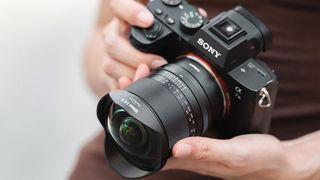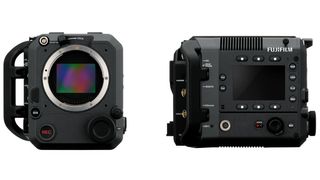Pictures of the amazing Comet Neowise have been flooding the news and social media channels for the past couple of weeks – and it is not yet too late for you to see and photograph this incredible astronomical phenomenon.
However, if you want to get a picture of this incredible astro event, then this week is likely to be your last chance. With this particular comet not expected at make its return visit to the earth's skies for another 6,800 years this is something you don't want to miss seeing.
Often comets turn out to be more disappointing than astronomers had hoped – but this one has so far exceeded expectations, and there is still time to see it for yourself. People were getting good views and images of the comet last night... and although the comet is now getting fainter in the sky, it is actually now at its closest point to earth.
Comet Neowise, or Comet C/2020 F3 to give it its full name, has turned out to be one of the best comets for people to view without the need for specialist equipment since Comet Hale-Bopp back in 1997.
It is visible on the northern horizon after sunset – when it is dark enough to make out the comet and its tail. You do need to be in the Northern Hemisphere – and of course you also need clear skies.
How to see the comet
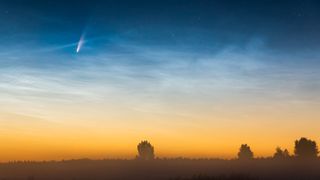
But according to Space.com, the conditions for seeing Comet Neowise are now getting better. Up until last week, the best images have been shot in the early hours of the morning, but right now the best views will now be an hour or so after sunset.
"If you're in the Northern Hemisphere, you can see it," said Joe Masiero, deputy principal investigator of NEOWISE, the NASA space telescope that discovered the comet, "As the next couple of days progress, it will get higher in the evening sky, so you're going to want to look northwest right under the Big Dipper." (The Big Dipper is a ladle-shaped star pattern that is part of the constellation Ursa Major also known as the Big Bear or The Plough.)
Get the Digital Camera World Newsletter
The best camera deals, reviews, product advice, and unmissable photography news, direct to your inbox!
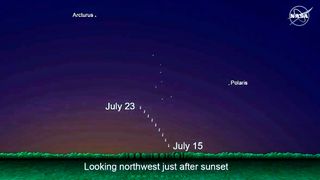
You can see it with the naked eye, once you know where it is and your eyes become accustomed to the dark. But the comet and its tail will be much clearer to see in long-exposure photographs – so taking pictures may be your best bet for picking out the comet from the other stars
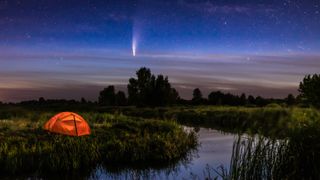
How to photograph the comet
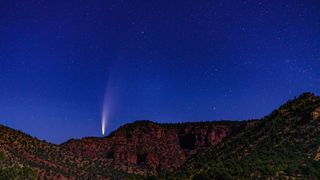

For photographing the comet, you need a reasonably long exposure in order to capture the comet. An exposure setting of around 5 to 10 seconds is roughly what to expect. For this you will need to use your lens at its widest, maximum aperture - and then set a relatively high ISO in order to give you the correct exposure.
An ISO of between 800 and 3200 is what to expect (the exact setting will depend, amongst other things on the maximum aperture of your lens). A tripod is therefore essential if you want sharp shots.
You can use any lens, but the best shots we have seen so far have used a short telephoto setting – so as to get the comet a reasonable size in the frame. A key point is that you should try to find a camera position where you can include some foreground interest - some rocks, say, or a building - that will provide some context to your image.
To observe the comet better, and to see the forked shape of its tail, it is well worth taking binoculars with you.
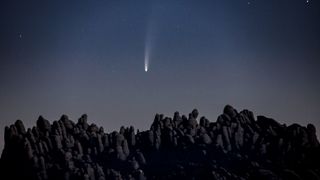
Read more
• The best lenses for astrophotography
• The best camera and gear for shooting the night sky
• Best light pollution filters
• The best telescopes for astrophotography
• The best binoculars
• Best head torch


